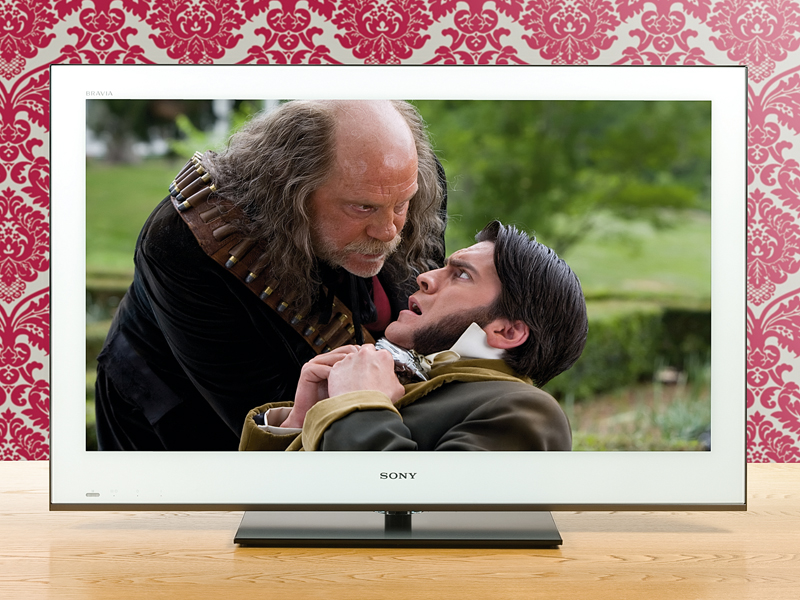TechRadar Verdict
Pros
- +
Excellent picture quality
- +
Good backlight consistency
- +
Online TV platform
- +
Very elegant design especially with the optional stand
Cons
- -
Limited viewing angle
- -
HD could be sharper
- -
Could be cheaper
Why you can trust TechRadar
Sony's Monolithic TV styling is sported here by the KDL-40NX703 and is all about towering minimalism. The bezel is finished in a single layer, with a glass topsheet unifying the bezel and the screen and the rear end is slim at just 64mm.
You can get the TV in either black or white – we've shot the white finished model, here, but you may prefer the darker, more discreet look.
The thing that most sets the 40NX703 apart from the pack, though, is its nifty, optional silver bar desktop mount. This lovely slab of metal allows the TV to slot into its centre, and lets you adjust the set's angle to lean back by 6˚ if standing it upright doesn't suit. What's more, the bar support has been perforated to enable sound from the TV's base-mounted speakers to emerge freely into your room.
This stand option (costing £329) is clever, unique and mighty stylish, but you can still mount the set on the regular supplied desktop stand and save pennies.
In terms of connections, four HDMIs are on hand for HD/digital video duties, while masses of multimedia provision comes from a LAN socket and a USB port. The LAN is particularly significant, as it permits streaming from DLNA PCs and access to Sony's Bravia Internet Video online platform.
The latter is the most content-heavy and fulfilling online TV system to date, with highlights including LOVEFiLM, YouTube, the BBC iPlayer, Sony's new Qriocity film-rental service, and Demand Five.
The single USB allows playback of video, photo and music multimedia files, and can enable Wi-Fi via an optional dongle. Pictures, meanwhile, are driven by a processing combination of Sony's Bravia Engine 3 and 100Hz, with the full HD panel illuminated by an edge LED system.
Sign up for breaking news, reviews, opinion, top tech deals, and more.
The only weakness among the Sony's feature set is a lack of fine-tuning colour tools, although the onboard Real Colour Processor does a decent colour tone job.
Backlit perfection
Sony has had issues recently with serious backlight inconsistency problems, but, thankfully, the 40NX703 gets off to a great start. During very dark scenes on my Avatar Blu-ray, it was noticeable that blacks looked pretty consistent across the screen. In fact, it's the most believable black performance I've seen to date from an Sony TV.
The 40NX703 builds nicely on this with some really intense and bold colours. Crucially, though, this vibrancy is partnered with powerful colour processing, resulting in some deft touches when it comes to colour blends and tonal range.
Another strength of the 40NX703 is the way it retains clarity during action scenes, thanks to the set's effective motion processing tools. These aren't overbearing when in use either, provided you stick with the TruMotion 100Hz engine's Standard setting, which leaves the picture looking natural rather than forced.
The 40NX703's colours and contrast reduce during off-axis viewing, the TV's front panel can reflect direct light a little heavily, and its HD pictures aren't quite as crisp as normal for Sony. But with some good standard-def upscaling and a passable if hardly earth-shattering audio, the 40NX703 remains a seriously attractive combination of form and function.
Follow TechRadar Reviews on Twitter: http://twitter.com/techradarreview

John has been writing about home entertainment technology for more than two decades - an especially impressive feat considering he still claims to only be 35 years old (yeah, right). In that time he’s reviewed hundreds if not thousands of TVs, projectors and speakers, and spent frankly far too long sitting by himself in a dark room.
